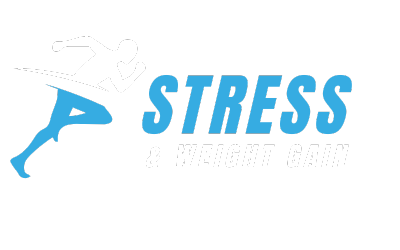Weight Loss For Your Abs Cycling
Are you tired of endless crunches and sit-ups that yield no results? Look no further, because we have the secret to achieving those dreamy abs: cycling! Not only does cycling provide an exhilarating workout, but it also targets your abdominal muscles, helping you shed those stubborn pounds around your midsection. Say goodbye to boring gym routines and hello to the thrill of the open road as you pedal your way to a toned and sculpted core. Get ready to witness the transformative power of weight loss for your abs with the simple yet effective exercise of cycling.

The Benefits of Cycling for Weight Loss
Cycling is a fantastic form of exercise that offers numerous benefits for weight loss. Not only does it burn calories, but it also targets abdominal muscles, improves cardiovascular health, and increases metabolism. If you’re looking to shed some pounds and tone your midsection, cycling might just be the perfect solution for you.
Burns Calories
One of the key benefits of cycling is its ability to burn calories. When you hop onto your bike and pedal away, you engage multiple muscle groups, which in turn increases your heart rate. This elevated heart rate leads to an increased calorie burn, helping you to create a calorie deficit and lose weight. Whether you’re cycling outdoors or using a stationary bike, you can effectively burn calories and work towards your weight loss goals.
Targets Abdominal Muscles
If you’re looking to tone your abs and strengthen your core, cycling is an excellent choice. While cycling primarily focuses on the lower body muscles, it also engages your abdominal muscles to stabilize your body and maintain proper posture on the bike. By consistently cycling, you can gradually strengthen your abs and achieve a more toned and defined midsection.
Improves Cardiovascular Health
Regular cycling is a wonderful way to improve your cardiovascular health. When you cycle, your heart rate increases, and your lungs work harder to supply oxygen to your muscles. This helps to strengthen your heart and improve its overall efficiency. As a result, you’ll gradually increase your cardiovascular endurance, making it easier for you to engage in more intense workouts and burn even more calories.
Increases Metabolism
Cycling can have a positive impact on your metabolism, which plays a crucial role in weight loss. When you cycle, your body burns calories not only during the workout but also after the exercise session is over. Known as the “afterburn effect,” this elevated calorie burn can last for several hours post-workout. By consistently cycling, you can increase your metabolism and turn your body into a calorie-burning machine even when you’re at rest.
Essential Equipment for Cycling
Before embarking on your cycling journey, it’s important to ensure that you have the right equipment to support your weight loss and fitness goals. Here are some essential items you should consider:
Choosing the Right Bike
Choosing the right bike is crucial for a comfortable and efficient cycling experience. Consider factors such as your riding style, terrain, and personal preferences when selecting a bike. Whether you opt for a road bike, mountain bike, or hybrid bike, ensure that it suits your needs and provides a smooth, enjoyable ride.
Wearing Proper Cycling Apparel
Investing in proper cycling apparel can greatly enhance your comfort and performance on the bike. Look for breathable, moisture-wicking fabrics that will keep you cool and dry during your rides. A well-fitted cycling jersey, padded shorts, and cycling shoes with cleats can make a world of difference in your cycling experience.
Investing in Safety Equipment
To ensure your safety while cycling, it’s essential to invest in the proper safety equipment. A high-quality helmet is a must-have to protect your head in case of any accidents or falls. Reflective clothing, lights, and reflectors on your bike are also crucial for visibility, especially when cycling in low light conditions. Additionally, consider purchasing gloves, knee pads, and elbow pads for extra protection.
Setting Realistic Weight Loss Goals
When embarking on a weight loss journey, it’s important to set realistic goals to ensure long-term success. Here are some tips to help you set achievable weight loss goals:
Consulting with a Healthcare Professional
Before starting any weight loss program, it’s advisable to consult with a healthcare professional. They can assess your current health status, provide guidance on setting realistic goals, and offer valuable advice on how to safely incorporate cycling into your weight loss journey.
Determining Your Baseline
To set realistic weight loss goals, it’s helpful to determine your baseline. This includes assessing your current weight, body measurements, and overall fitness level. Taking these initial measurements will provide a starting point for tracking your progress, making it easier to set achievable milestones along the way.
Creating a Realistic Timeline
Once you have determined your baseline, it’s important to create a realistic timeline for your weight loss goals. Understand that healthy weight loss is gradual, and aiming for 1-2 pounds per week is generally considered a safe and sustainable rate of weight loss. Set a timeline that allows you to achieve your desired weight loss while maintaining a balanced and healthy lifestyle.
Establishing Measurable Milestones
Breaking your weight loss journey into smaller, measurable milestones can help you stay motivated and track your progress. For example, set a goal to lose a certain number of pounds within a specific timeframe or to fit into a particular clothing size. By celebrating these milestones along the way, you’ll feel a sense of accomplishment and stay motivated to continue cycling and working towards your ultimate weight loss goals.

Developing an Effective Cycling Workout Plan
To maximize the benefits of cycling for weight loss, it’s important to develop an effective workout plan. Here are some key components to consider when creating your cycling workout routine:
Warm-up and Cool-down Exercises
Start each cycling session with a warm-up to prepare your body for exercise and reduce the risk of injury. This can include gentle stretches and a few minutes of light pedaling. Similarly, end each workout with a cool-down period, which should involve slow pedaling and stretches to help your muscles recover and prevent post-workout soreness.
Interval Training
Interval training involves alternating between periods of high-intensity effort and recovery. This type of training is highly effective for weight loss as it boosts your metabolism and burns a significant amount of calories in a shorter amount of time. Try incorporating intervals into your cycling workouts by alternating between high-intensity sprints and moderate-paced rides.
Circuit Training
Circuit training combines cycling with other exercises to provide a full-body workout. This can involve hopping off your bike at various points during your ride to perform bodyweight exercises such as push-ups, squats, and lunges. By incorporating circuit training into your cycling routine, you’ll engage different muscle groups and further increase your calorie burn.
HIIT (High-Intensity Interval Training)
HIIT is a form of interval training that involves short bursts of all-out effort followed by brief recovery periods. This type of training is highly effective for weight loss as it maximizes calorie burn and improves cardiovascular fitness. Try incorporating HIIT sessions into your cycling routine by alternating between intense sprints and active recovery periods.
Incorporating Strength Training into Your Cycling Routine
Strength training is an important component of any weight loss journey, as it helps to build lean muscle mass, increase metabolism, and improve overall strength. Here’s how you can incorporate strength training into your cycling routine:
Targeting the Core Muscles
Cycling primarily engages the lower body muscles, but it’s important to also focus on your core muscles for overall stability and balance. Incorporate exercises that target the core, such as planks, Russian twists, and bicycle crunches, into your regular workout routine. This will help strengthen your abdominal muscles and improve your cycling performance.
Performing Resistance Exercises
Including resistance exercises in your strength training routine can help increase muscle strength and promote weight loss. Use resistance bands or dumbbells to perform exercises such as squats, lunges, and deadlifts. These exercises target multiple muscle groups and can be easily incorporated into your cycling routine for a well-rounded workout.
Utilizing Bodyweight Exercises
Don’t underestimate the effectiveness of bodyweight exercises for strength training. Exercises like push-ups, tricep dips, and glute bridges can be performed anywhere, including during rest breaks on your cycling route. Incorporating bodyweight exercises into your cycling routine will help you build strength and maximize your weight loss efforts.
Importance of a Balanced Diet
While cycling is a fantastic form of exercise for weight loss, it’s important to remember that diet plays a crucial role in achieving your goals. Here are some key aspects to consider when it comes to maintaining a balanced diet:
Caloric Deficit for Weight Loss
To lose weight, you need to create a caloric deficit, which means consuming fewer calories than you burn. Calculate your daily caloric needs based on your current weight, activity level, and weight loss goals. Aim to consume a healthy and balanced diet that provides adequate nutrition while creating a caloric deficit to support weight loss.
Eating Nutrient-Dense Foods
Focus on consuming nutrient-dense foods that provide essential vitamins, minerals, and antioxidants. Include plenty of fruits, vegetables, lean proteins, whole grains, and healthy fats in your diet. These foods will not only support your weight loss goals but also nourish your body and provide the energy needed for your cycling workouts.
Incorporating Protein for Muscle Recovery
Protein is essential for muscle recovery and growth. Make sure to include lean sources of protein such as chicken, fish, tofu, beans, and Greek yogurt in your diet. Consuming an adequate amount of protein will help repair your muscles after cycling workouts and support your weight loss efforts by promoting lean muscle mass development.
Maximizing Fat Burning during Cycling
To maximize the fat-burning potential of your cycling workouts, try incorporating the following strategies:
Long-Distance Rides
Long-distance rides at a moderate intensity are great for burning fat. These rides require you to sustain a steady pace for an extended duration, allowing your body to tap into its fat stores for energy. Aim to include at least one or two longer rides each week to maximize your fat-burning potential.
Interval Training
As mentioned earlier, interval training is highly effective for fat burning. By incorporating high-intensity intervals into your cycling workouts, you can increase your calorie burn and stimulate your body to burn fat even after your workout is over. Alternate between periods of all-out effort and recovery to reap the benefits of interval training.
Cycling on Inclines
Incorporating inclines into your cycling routes or using the resistance settings on a stationary bike can significantly increase the intensity of your workouts and maximize fat burning. Cycling uphill requires more effort and engages additional muscle groups, helping you burn more calories and stimulate fat loss.
HIIT Sessions
HIIT sessions are an excellent way to maximize fat burning during your cycling workouts. Alternate between short bursts of high-intensity pedaling and brief recovery periods. This high-intensity effort will keep your heart rate elevated, maximize your calorie burn, and promote fat loss.
Avoiding Common Mistakes and Injuries
When engaging in any form of exercise, it’s important to avoid common mistakes that could hinder your progress or lead to injuries. Here are some common mistakes to avoid when cycling for weight loss:
Overtraining
While cycling regularly is important for weight loss, overtraining can do more harm than good. Listen to your body and allow for adequate rest and recovery between workouts. Pushing yourself too hard without proper recovery can lead to fatigue, muscle imbalances, and an increased risk of injuries.
Ignoring Proper Cycling Form
Proper cycling form is not only important for maximizing your workout but also for preventing injuries. Ensure that your bike is properly adjusted to fit your body and maintain a relaxed but engaged posture while cycling. Avoid hunching over the handlebars or locking your elbows, as these can lead to discomfort and strain in your neck, back, and shoulders.
Skipping Rest Days
Rest days are just as important as workout days. Many people overlook the importance of rest and recovery in their weight loss journey. Resting allows your body to repair and adapt to the stress of exercise, reducing the risk of overuse injuries and optimizing your weight loss efforts. Aim for at least one or two days of rest or light activity per week.
Failing to Stretch and Warm Up
Stretching and warming up before each cycling session is crucial to prevent injuries and enhance performance. Prioritize dynamic stretches that target the muscles you’ll be using during your ride, such as hamstring stretches and quad stretches. Additionally, perform a brief warm-up by starting with a few minutes of light pedaling before gradually increasing your intensity.
Staying Motivated for Long-Term Success
Maintaining motivation is key when it comes to achieving long-term weight loss results. Here are some strategies to help you stay motivated throughout your cycling journey:
Tracking Your Progress
Keep track of your weight loss progress, cycling mileage, and other measurable milestones. This can be done through a journal, a fitness app, or a simple spreadsheet. Seeing your progress visually can be incredibly motivating and help you stay on track towards your goals.
Joining a Cycling Group
Consider joining a local cycling group or online community. Surrounding yourself with like-minded individuals who share your passion for cycling and weight loss can provide support, accountability, and motivation. You can share your accomplishments, seek advice, and even participate in group rides or challenges.
Setting Rewards for Milestones
Set small rewards for reaching certain milestones along your weight loss journey. Treat yourself to a massage, a new cycling accessory, or a day off from your workouts. These rewards serve as a reminder of your progress and provide additional motivation to keep pushing forward.
Mixing Up Your Routes and Workouts
To prevent boredom and maintain motivation, vary your cycling routes and workouts. Explore new trails, take different paths around your neighborhood, or try cycling in different terrains. Additionally, incorporate different types of cycling workouts, such as hill sprints, long-distance rides, or group rides. Keeping things interesting and challenging will help you stay engaged and motivated.
Maintaining Weight Loss Results
Once you’ve achieved your weight loss goals, it’s important to maintain your results. Here are some strategies to help you maintain weight loss:
Continuing with Regular Workouts
Consistency is key when it comes to maintaining weight loss. Continue with regular cycling workouts to ensure you’re burning calories and staying in shape. Aim for at least three to five cycling sessions per week, combining different types of workouts to keep your body challenged and maximize calorie burn.
Adopting Healthy Lifestyle Habits
Weight loss is not just about exercise; it’s also about adopting healthy lifestyle habits. Incorporate habits such as eating a balanced diet, getting enough sleep, staying hydrated, and managing stress. These lifestyle choices will not only support weight maintenance but also have a positive impact on your overall health and well-being.
Monitoring Caloric Intake
While you may not need to be in a caloric deficit anymore, it’s still important to monitor your caloric intake to prevent weight gain. Be mindful of portion sizes, practice intuitive eating, and listen to your body’s hunger and fullness cues. Aim to maintain a balanced and nutritious diet that supports your weight maintenance goals.
Adding Cross-Training Activities
In addition to cycling, consider adding cross-training activities to your routine. Engaging in activities such as swimming, hiking, yoga, or strength training can help prevent exercise burnout and provide a well-rounded fitness regimen. Cross-training also helps to strengthen different muscle groups and improve overall fitness.

